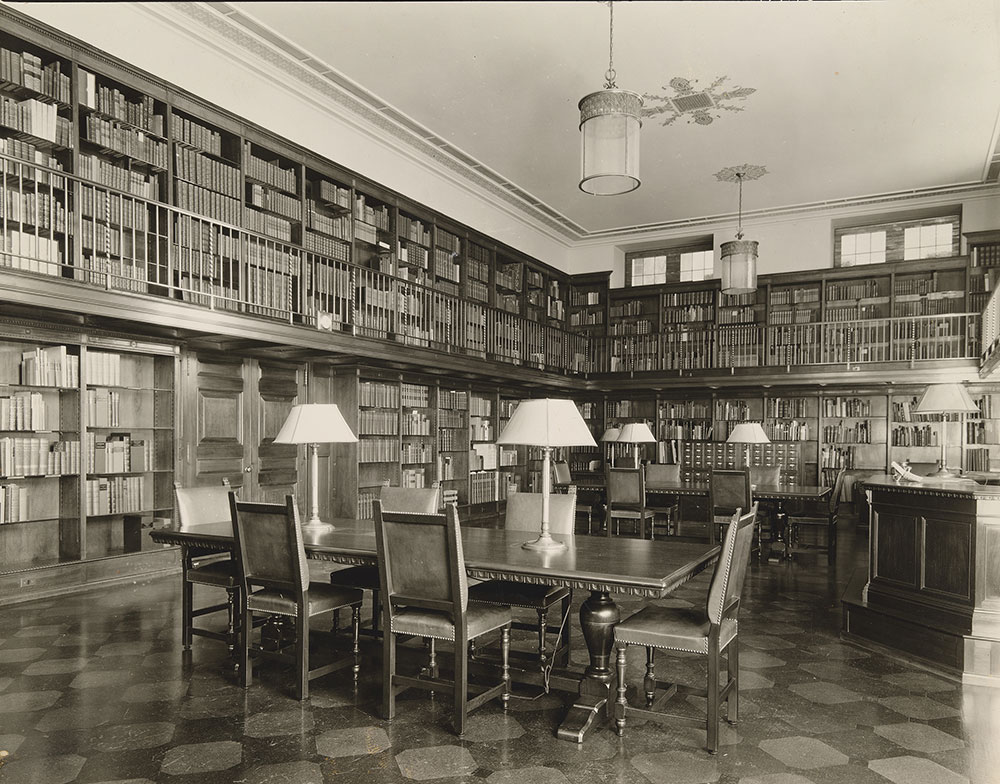Listen to co-curator Philip Palmer discuss the history of researchers accessing the Morgan’s rare collections.

Tebbs & Knell, New York
Reading Room, ca. 1928–60
Reproduction of a photographic print
The Morgan Library & Museum; ARC 1913.4
PHILIP: Though scholars had been able to access the Morgan’s collection for many years, the Library was always closed if Pierpont was out of town, and in its earliest days access was highly limited. The following anecdote from 1908 offers colorful detail about how prospective researchers accessed the Library:
One had to ring an outside bell to have the door opened by a guard, and then only about four inches. A business card would be passed in and the door would be closed again and locked. After a short interval, the guard would reappear and state if Miss Greene would see the caller. After a few visits, I was admitted at once.
All of this changed when the Library went public in 1924. When the first reading room opened in 1928, it followed the access policies laid out by the Board of Trustees, which stipulated that the institution is a “public library, for reference only . . . for the use and benefit . . . of all persons whomsoever, subject only to suitable rules and regulations.” The Board clearly took its role seriously in establishing a policy to provide access to the collection but also to protect and preserve it. An early goal was “to encourage quality of scholarship rather than ‘numbers’ of students.” This meant that researchers were required to submit letters of recommendation and schedule special appointments with staff to consult “reserved” books and manuscripts, such as Shakespeare’s First Folio. The earliest set of rules did not allow undergraduates to consult rare materials, though by 1933 that rule had been relaxed.
